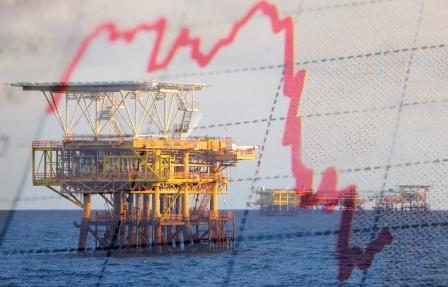

Crude oil has been trading with a bearish tone ever since the trade dispute between the world’s two largest oil consumers—the US and China–escalated in June 2018. Prices are down about 25 percent in the key NYMEX platform and 20 percent in domestic futures market on expectations of lower demand.
The trade war between the biggest two economies has slowed the pace of global economic growth and demand for oil. Citing the US-China tensions, the IMF cut its 2019 global growth outlook to its slowest pace since the 2008-2009 financial crisis.
In its latest World Economic Outlook projections, the agency predicts 2019 GDP growth at 3 percent, down from 3.2 percent in its July forecast.
A drop in vehicle sale and a slump in automobile industry due to higher tariffs and prolonged uncertainty about trade policies are affecting the global oil demand. Globally, vehicle purchases fell by 3 percent in 2018 and trade growth was just 1 percent in the first half of 2019, the weakest level since 2012.
Supply and demand are the key determinants for oil prices. When demand outpaces supply and during periods of high economic growth, prices typically rise and vice versa.
Challenges on the key oil transport waterway the Strait of Hormuz and an attack on Saudi Aramco’s oil processing facility in mid-September disturbed global oil output, which caused a significant increase in prices. However, sinking global demand overshadowed such concerns and prices declined by the first week of October.
A cut in demand forecast by many global agencies is weighing on the sentiment of oil.
The US EIA cut its oil growth demand expectations for 2020 and prices of crude in its latest monthly energy outlook.
The agency foresees global oil demand for the current year at 840,000 barrels per day and for 2020, 1.3 million barrels per day.
It have also revised down the average price of WTI crude to $54.43 a barrel and for Brent to $59.93 a barrel for the next year. The US energy agency also expects a pickup in production in the fourth quarter due to return of output from many key producing areas.
Banks such as Morgan Stanley and Barclays slashed their oil demand and price outlook.
Morgan Stanley expects Brent prices to be held near $60 per barrel and WTI crude at $ 55 a barrel for the rest of the year. Likewise, Barclays also reduced its price outlook for the second half of this year and for 2020.
Supply cuts by major oil producers now have a lesser impact on prices.
Until a few years ago, Saudi Arabia controlled global prices but now increased shale oil exploration through advanced drilling techniques have made the US a vital player in the oil market. Higher US production now dominates the global market.
OPEC and other oil-producing countries, including Russia, have cut output by 1.2 million barrels per day since January. However, there is a talk of OPEC and allies going for deeper cuts at its December meeting, which may tighten the market conditions.
Looking ahead, the feebleness in oil prices may continue as demand is expected to slow down till weak global economic activity lingers.
OPEC-led supply shortage to boost prices may be offset by new global suppliers such as the US.
On the price front, a choppy trade between $50.50-61 a barrel is expected initially, breaking any of the sides will suggest fresh direction to the commodity.
First published in Money Control.